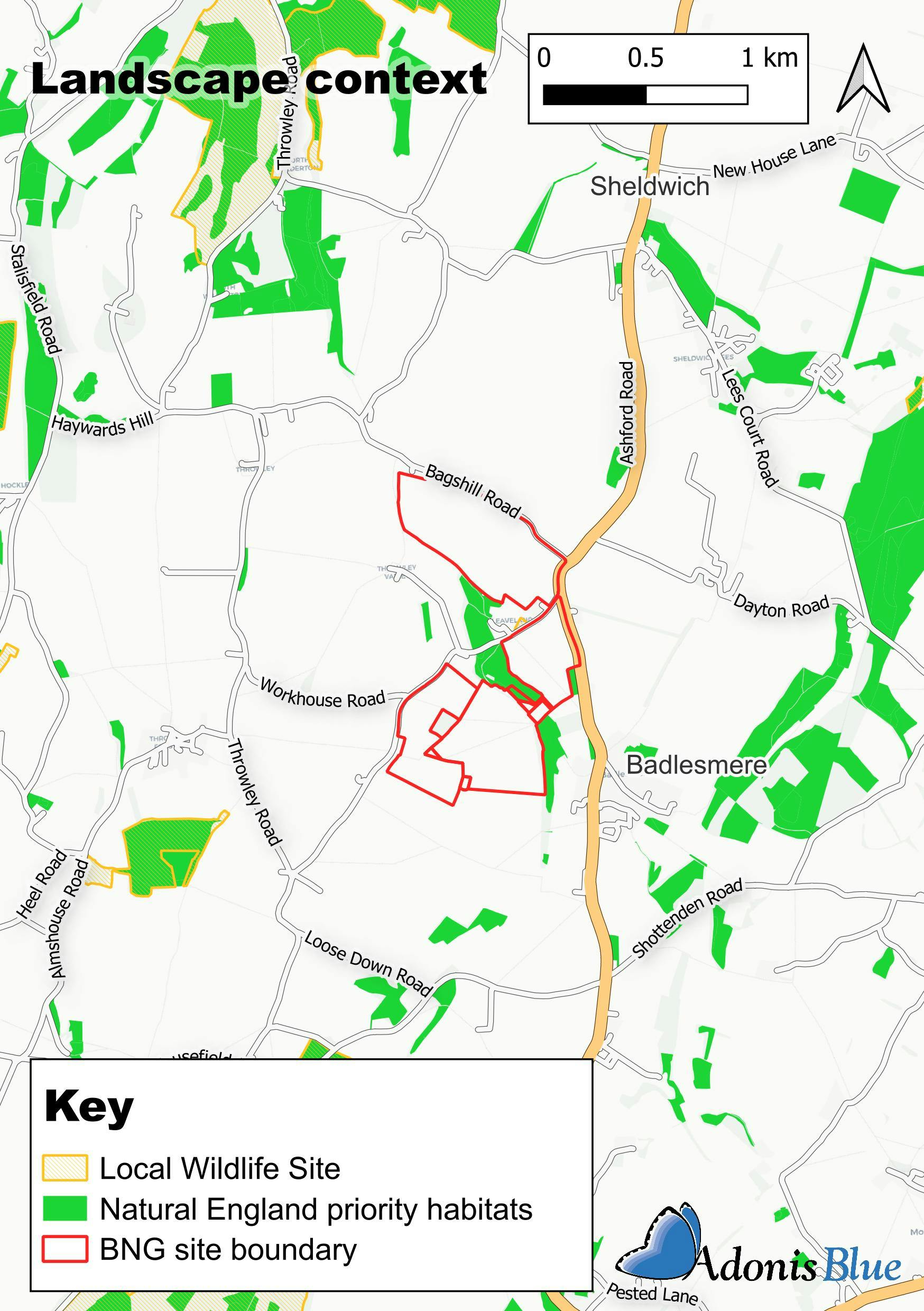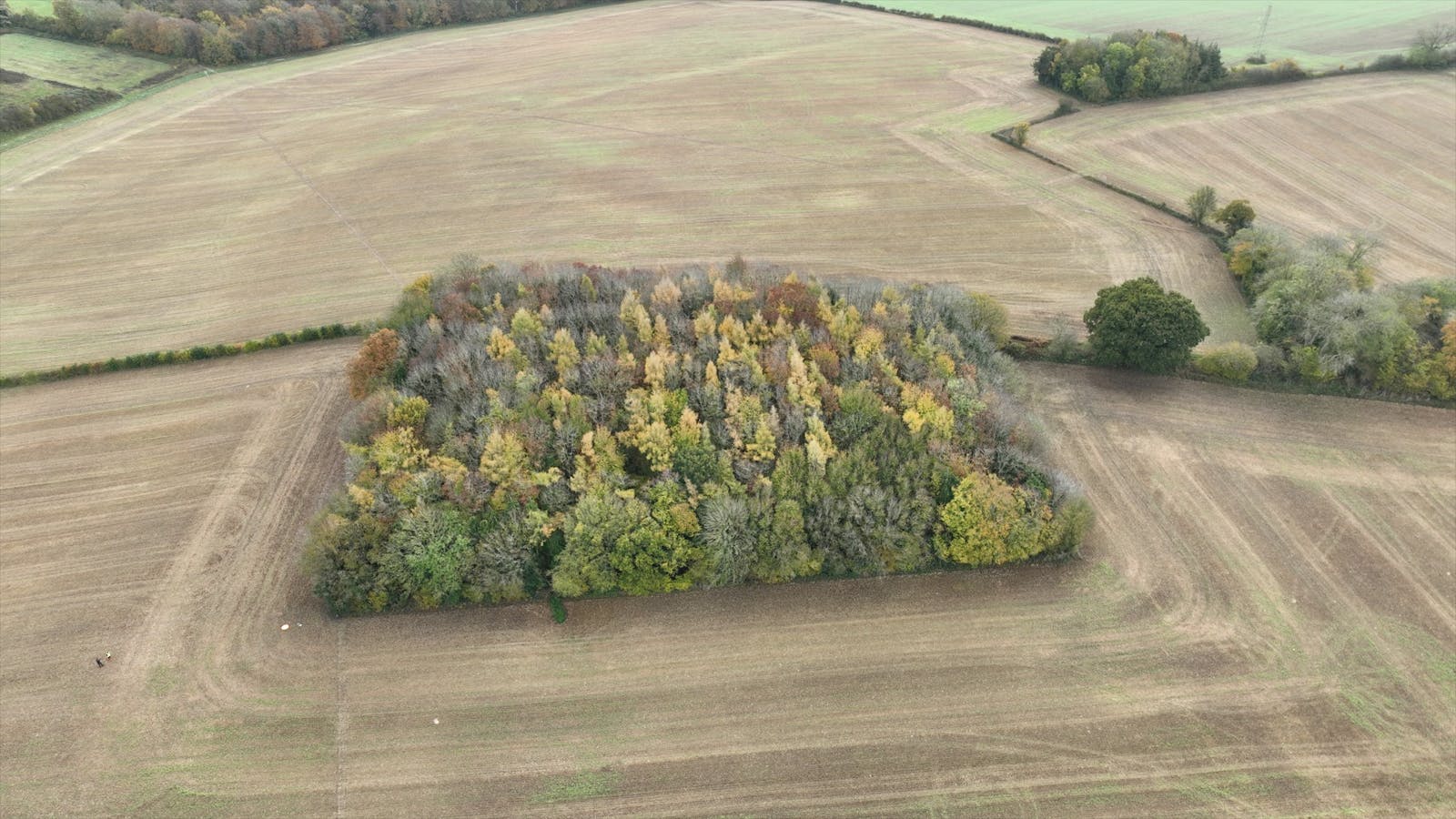
LeavelandBNG offset site
Local Planning Authority: Swale
National Character Area(s): North Downs
Postcode: ME13 0NW
OS grid ref: TR 00424 54769
What3words: ///never.raven.actor
Habitat units available - Surveyed 2023
A total of 373.00 habitat units and 12.03 hedgerow units are available from the following habitat types:
Grassland
Traditional Orchard (Very High Distinctiveness) - 1.70 units
Lowland calcareous grassland (High Distinctiveness) - 1.47 units
Other neutral grassland (Medium Distinctiveness) - 253.31 units
Heathland and Shrub
Mixed scrub (Medium Distinctiveness) - 1.52 units
Woodland
Lowland Mixed Deciduous Woodland (High Distinctiveness) - 0.19 units
Other woodland; broadleaved (Medium Distinctiveness) - 114.07 units
Other woodland; mixed (Medium Distinctiveness) - 0.76 units
Hedgerows
Native hedgerow - 12.03 units
Site description
The 77 ha site is located within the District of Swale, approximately 6.4km south of Faversham with the village of Badlesmere to the southeast. The site falls within the Kent Downs National Landscape (aka Area of Outstanding Natural Beauty) and the wider area is made up of arable fields interspersed with villages and woodlands.
The offset site comprises cereal crops and is surrounded by woodland and arable fields with the village of Badlesmere to the southeast. The wider area is made up of small villages, and areas of woodland and arable fields.
Recommendations are for the condition of the lowland calcareous grassland, mixed scrub, lowland mixed deciduous woodland, other broadleaved woodland, and other mixed woodland to be increased by one level, i.e., from moderate to good, through management. This will be achieved through grazing, felling, pruning, planting. Other neutral grassland, other broadleaved woodland and traditional orchards will be created. This will be achieved mainly through natural regeneration, planting. This wide range of habitats is designed to support a diverse mix of plant, fungi, and animal life.
New woodland creation will serve to join up the 11.7 ha of existing broadleaved woodland patches within and adjacent to the site. A mix of native broadleaved species will be used, creating important nesting and feeding habitats for breeding birds.
Traditional orchards are a priority habitat and provide good bat roosts and nesting sites for birds such as spotted flycatchers, as well as supporting many fungi, moss and lichen species.
Additional native hedgerows will be created, and existing hedgerows will be enhanced.
Fill out a form at the bottom of this page or email your development's BNG metric to bngenquiries@adonisblue.org.uk for a free BNG consultation.
These units are valid for a maximum of two years, provided site conditions do not significantly change. If more than two years have lapsed between the site survey and habitat works being undertaken, an updated survey will be necessary to ensure recommendations remain valid.

Habitat Transitions


Site Photos


